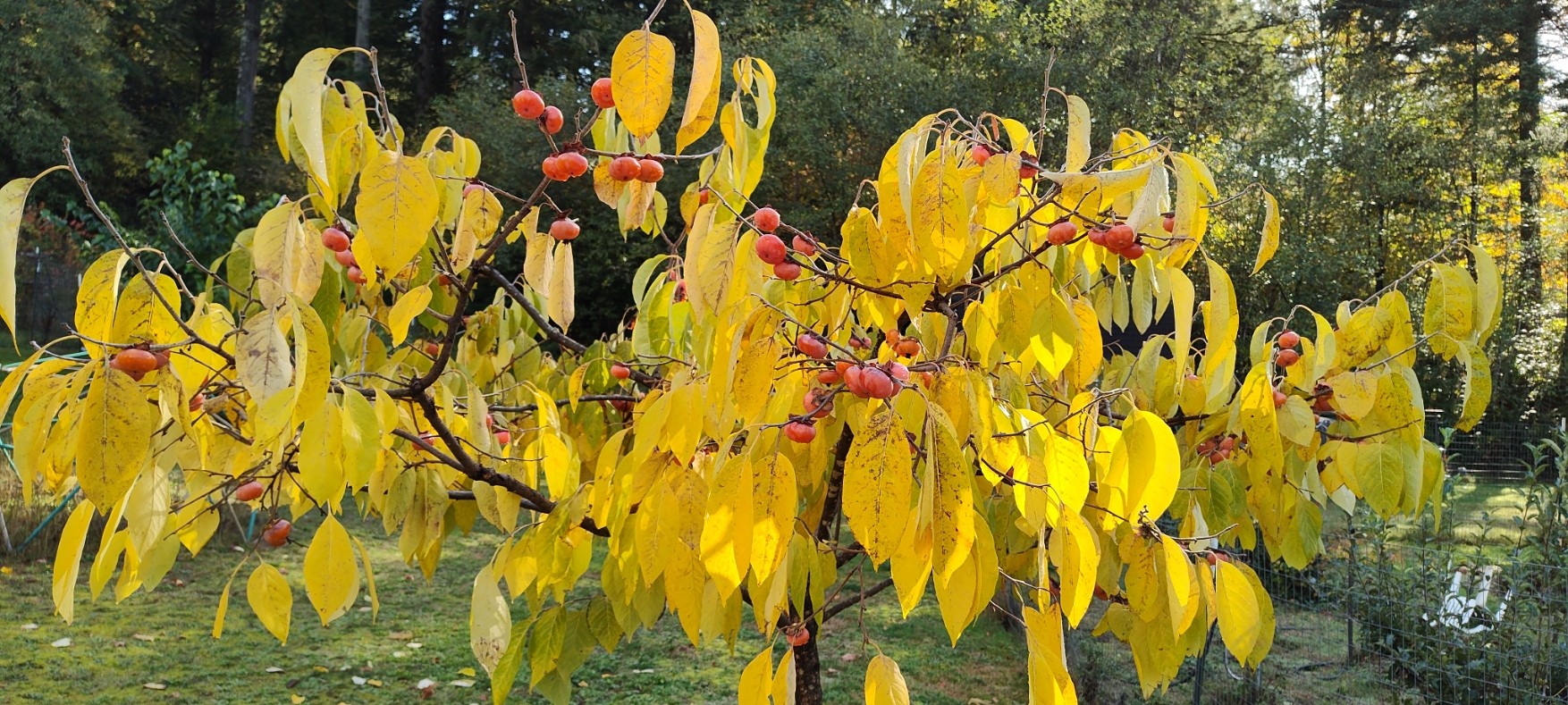I have been eating the Garretsons. They all seem to have a black spot like this. Does anyone know why? They don't have seeds since my Szukis male tree died a couple of years ago. They aren't as big or as tasty as when they were seeded. That fits in with what some of the experts have said all along. After the Szukis died, I only got a few persimmons last year. I have many more this year, but like I said, they are smaller and less delicious. I'll have to graft Szukis or F-100 in. Here's the photo:
John S
PDX OR
I just tasted my first two H-118s today. They also don't have seeds, but they are just as large and delicious as they ever were. It makes me speculate that some varieties are subject to quality loss when unseeded, but others are not. Garretson is definitely affected.
My early goldens haven't ripened yet, so I will be curious to see how they are.
I will be able to taste Yates for the first time this year. It will be interesting to see how they taste. I've never had them before, so I won't have perspective to contrast between seeded and unseeded quality.
John S
PDX OR
Last year I had a lot of H-118 but most of them got wasted. I let them hang until soft but even when completely softened they were still astringent.
This year I'm taking them in when mostly orange, and they are softening to delicious on the counter at 70 degrees or so in about a week perhaps.
Interesting idea, Jafar. I just had another one yesterday. Unpollinated H-118's are better than unpollinated Garretsons, IMHO. I have been carefully jiggling them to see when they fall off. As long as I do that, none are astringent. The leaves are falling off, though, so I may need to use your technique.
John S
PDX OR
Jafar and I have talked about astringency and bitterness many times before. I think that there is probably some astringency in some of the persimmons that I eat, but I hardly notice it. Apparently there is a gene that determines whether someone can taste bitter or astringent flavors. In France, they herald these people and hire them as tasters, chefs and wine makers. I guess I'm more of a common taster. I don't even notice that much. I won't ever get hired for that in France. On the other hand, I can enjoy a wider variety of fruits with some bitterness.
JohN S
PDX OR
I have a few Yates persimmons ripening this year, thanks to Daniel. I tried my first one a week or so ago. Although it was described by many others as "strong flavored", I didn't find it so. It was larger than Garretson, Szukis, Campbell's Early NC-1 and Early Golden. I was surprised that it was so much more mildly flavored than I had read about. Still tasted good, though.
JOhn S
PDX OR
The squirrels tried to eat my American persimmons. I could see some with tooth marks in them. The beauty of the American persimmon is that you don't have to spray it with toxic pesticides. It doesn't really become edible until it's ripe. People back east for years have gone up to kids and told them to eat one that wasn't ripe yet and watched the harsh look on the kid's face. A squirrel had taken one and left it on the fence top. I'm sure he started to eat it and got a very puckery face.
I am going to try to use Jafar's method and bring it inside to see if it will ripen on the counter at 70 F.
John S
PDX OR
For the 2nd year in a row my H118, Early Jewel, Prairie Star persimmon tasted great when fruit ripened in the heat, or was brought in orange and softened on the counter. But the ones that took longer and left on the tree until they were soft, sweet, and translucent did not reliably lose their astringency. So most of the crop wasted.
If I get a good set next year like I did in 2024 and 2025 I'll double-resolve to bring fruit in while firm once the weather starts to change.
I did do a much better job of thinning and pruning in 2025 so it could have been a great crop of uniformly sized fruit.

Idyllwild
jafar
Marsha H
Viron
1 Guest(s)
